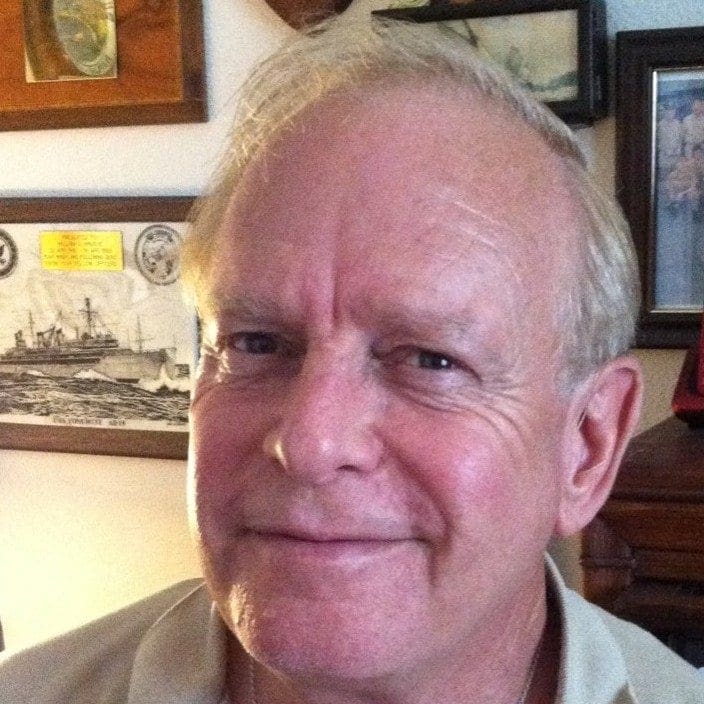
William C. Krug III, LCDR William C. Krug III was a Mustang (E1-E8 / O-1 -04). Bill served 26 years before retiring. The USS Yosemite was his last Ship. He served as the Assistant Repair Officer Med and Persian Gulf Deployment.
I was an old fellow when I was aboard with over 22 years of service (91-93), but there were a lot of much younger sailors, some just beginning their Naval Service. This is of course, why we have been trying to focus on the Jacksonville area to gain some of the later crews and, in many cases, younger people to keep our group going.
Perhaps it is easier for me, because while I have served on an Ocean Going Minesweeper (MSO), Mine Sweep Boat (MSB) Converted LCU (YFB), Fast Frigget (FF), Guided Misstyle Destroyer (DDG), the Sierra our sister ship and then the Yosemite. I only follow one ship, the USS Yosemite, as most of you know. The more I learn about the Yosemite’s past, the more it fascinates me.
Our Reunions offer us an opportunity to get back to our past lives, relationships, and our history. You will find the cycle is very much the same, no matter what time frame you were on the ship. You start out doing a job that’s part of the overall scope in the chain of command to protect our nation and its interests. Through the years, you continue the work at your job that may even change as new conflicts evolve around the world. We are all different people at different times in history, doing our part and doing our best to serve our country. Our naval duty is the glue that binds us together.
The USS Yosemite had a newspaper that was published monthly. It was called “THE Y’S WORD” I was reminded of that by a brief communication I got from Andrew Lorentz that filled out a form on our Website asking some questions. I see a lot of things like this as a result of our Website. It’s a short repository of not only the ship’s history but communications from anyone interested in its people, as the temporary home of a fellowship and its operation.
At any rate, Andrew had the good fortune of inheriting all the Yosemite memorabilia that his grandfather had. His grandfather was a Plank Owner, and he had in his possession Vol.1 NO. 1 issue of the “THE Y’S WORD” and while it was old and tattered, it was noted to be the first issue.
Additionally, he had a Ship’s Photo that had the ship’s special paint job making it difficult to identify on the high seas. I too have a very old picture of the ship nested with a whole group of Tin Cans (Destroyers) with a very unique paint job. I sent him a copy of my picture and went into my Yosemite Archives to find Vol.1 NO.5 and Vol.1 NO.6 of “The Y’S WORD“. I shared those with him and several pictures of the ship from different time periods.
Also, I invited him to join us at the Jacksonville Reunion this year. I really need all of you to seriously get moving in the direction of the Reunion and send Mike your registration forms. But we will get back to that. Also, any friends you have connected with the Yosemite, don’t hesitate to get them to sign-up and enjoy our Reunion.
I guess most of us that served were the fortunate ones. We had Med Cruises, Indian Ocean Deployments, and Persian Gulf Deployments. In most if not all cases, we knew we would be leaving our home port for approximately 6 months and then returning home.
In August of 1944 when the Yosemite left Stateside Shores and proceeded to Wartime Duties, there was little reasoning in the minds of the crew when the ship would be making a return trip to homeport. It was finally on March 7, 1946 that the Yosemite and her crew, after 19 months in the Pacific Theater, got underway once again and had a destination of Brooklyn, and home.
Keep in mind when she left, for all practical purposes, it was a trip with no clear end in sight. Her trip through the Canal, to Pearl Harbor, Eniwetok, Ulithi, Leyte Gulf, Okinawa, and farther on to the Japanese Shores was one of great responsibility and one that required long, arduous hours of applied hard labor—nights and days overhauling great turbines, crucial moment timing a torpedo mechanism, tiring hours of repairing the fine works of timepieces and doing a hundred other things. Clearly, there was nothing too large or too small for the Mighty Y as they referred to our great ship.
Getting back to her initial departure from the Pacific Theater and lots of stops, lots of supplies loaded and unloaded and special materials to carefully load, including ammunition, and lots of time was passing fast. When she reached Pearl Harbor in November 1944, her task was to patch up the cans that came back crippled from the forward areas that were too damaged to make it back to the states for overhaul.
We were an important part of the plan to get our Fleet operational and ready. The Yosemite crew spent precious hours, days, and weeks to meet deadlines to do repairs, so our naval forces were maximized as quickly as possible and we retained operational effectiveness. This mission took a lot of dedicated, planned hard work and long hours.
The USS Yosemite had a proven record of putting the sleek gray ladies of the Fleet back into operation with unsurpassable speed and quality of repairs. At Pearl, it was noted that the heavy cruiser Canberra was damaged in the Pacific Theater and was in a bad way. The required scope and level of repair were above the capability of a typical Destroyer Tender, but not above the Yosemite. Our accomplishments of rushing to put ships back into service provided the insight to all of how our great ship was referred to as The Busy Lady.
Now I will share an overview of the last chapter in the life of Yosemite. We left our families behind in the Mayport Jacksonville area and were deployed to the Persian Gulf. Some may recall we had a lot going on in the Gulf. Our role was very much the same as in the beginning to fix the forward-deployed ships and keeping them at sea working and not in a foreign port waiting for repairs.
I do know when we departed our homeport, I was not sure when we would return. I will attest that having been in the Gulf on other ships, it was not fun. The Straits of Hormuz were always a difficult passage. The water temperature was always too high and far too hot for normal people. Bahrain was always the same; all the other ports had the same old things and looked very much the same. If your mission was to buy gold or jewelry, it could have been satisfied in any port.
We traveled from the Atlantic to the Med, intending to pass through the Suez Canal to make our way into the Gulf. Things seldom go exactly as planned, and that is the reason they created a ship like ours. However, we were no exception to things going wrong. Most of you know that our propulsion plant was very much the same as when the Keel was laid. 400-pound steam, two boilers will not win you any races against a combatant, but in the long haul, pretty steady.
Now keep in mind at the end of WWII, Yosemite would leave Sasebo, Japan and making a 15,000-mile trip to New York with prior stops at Nagasaki, Yokosuka, Pear Harbor, and Panama. Then arrived in New York, where her peacetime overhaul would be affected. But in our case, while underway, we had a Boiler Explosion and lost 50% of our engineering capability. This was not good when your goal was to exit the Med and transit the Suez Canal.
LCDR Phil Johnson, the Repair Officer, was also the prior “OIC” of the Ship Repair Unit at Naples. Phil arranged with his contacts to have the Ship Repair Unit arrive on the pier with all the materials we needed to rebuild our boiler. So, when we docked, everything was ready to go. We loaded up and immediately got the repairs underway and casted off. Repairs were round the clock while we slowly moved toward the Suez Canal. Needless to say, we put all boiler tubing/piping, castable, and insulation to good use, and when we arrived at the Canal, we were fully operational! Two boilers ready to answer all bells.
While in the Gulf, we were involved in fixing the forward-deployed ships. We had a special project that was unique and interesting compared to the regular normal fixing we did. It was a restoration project. The Admiral at the time (Rear Admiral Raynor Taylor) in the 5th Fleet wanted to have the Enemy Mines that we captured with EOD / UDT teams neutralized, recovered, and collected restored so they could be displayed in different areas of the States.
It was an out-of-the-ordinary project. The mines were at a facility that was not willingly made available to us. I recall going with Phil Johnson in the dark of night to an undisclosed location to collect them with our repair guys and load them in a 6BYE canvas-covered truck. The operation was done in the dark of night as quickly and quietly as possible, and the mines were brought to the Yosemite.
In fact, the people at the facility were unwilling to give them up, so we just took them. We restored two kinds; one looked like a very large diameter 7-foot long torpedo and the other a ball with spikes sticking out (Chinese Mine). We also dedicated ourselves to fixing ships day and night. Desert Storm and Desert Shield (Two Phases of the Gulf War) brought a lot of Ships to the Gulf.
I also remember how proud crew members of the Yosemite were to win all the Commander Surface Force Atlantic Fleet “Battle Efficiency Awards” as we got this news en route to our home port. This prestigious honor is sought by all Atlantic Fleet Destroyer tenders, but achieved only by the very best that included: the Black E (Maritime Warfare), Red E (Engineering / Survivability, Green E (Command and Control), Blue E (Logistics Management), and the Green S (Safety).
It was a measure of our teamwork and a strong desire by each crew member to excel. A Battle Efficiency Award achievement gave all of us a reason to be proud of our contribution to the Navy by the Yosemite and how we were able to perform during a difficult period. I felt blessed to have Capt. C.W. Tuck at the helm during my time on the ship. He inspired all of us to do our best.
I was also fortunate to have a great boss LCDR / CDR Phil Johnson, at my side. No job was too difficult, too big, or too small for him. It all mattered. He hurt his ankle just before our Deployment to the Gulf. Capt Tuck could have had him left behind, and who knows who would have filled his shoes. I was on the production side, and Phil was on the Administrative side. That is not to say that he did not know a great deal of the nuts and bolts of things!
We were just billeted that way. It was useful to have someone that came up through the ranks with hands-on experience and was very knowledgeable next to you. Together we were an effective team. I became Phil’s eyes and ears due to his limited duty restriction because of his ankle to where he could go and what he could do. Looking back at the situation, Phil was a mentor and a great boss who allowed me to do much more and take on a lot more responsibility.
The Deployment to the Gulf under Captain Tuck sadly marked the last USS Yosemite deployment. When we heard a plan was in place to decommission the ship, we were all caught off guard, surprised, and unsettled. There were many cases where our Ship had proven its worth and demonstrated itself as a great achiever and contributor to the Fleet. How could such a proven winner of so many years be taken out of service?
One saving grace we thought was that a Lady from New York, who heard the news, wanted to take over the ship and have it homeported in the New York Harbor to be used as a training facility. All those great shops would still be used, and people would be positively impacted by our efforts to keep this great ship totally functional in all respects. It would have allowed some of the mission of the ship to survive. But, it was not to be.
Now I was leaving the ship for my next assignment. I will say I was so impressed by that group that Phil Johnson once led that I had requested to be assigned to CTF-63, and that meant AOIC Ship Repair Unit Naples and Bahrain. The good news was I was allowed to become OIC of Ship Repair Unit and did that for the last four years of my career. It was a great assignment. So I guess you can say fixing ships on Yosemite really rubbed off on me – first by sea then by land! I truly enjoyed living in Varcaturo, Italy, it was about 30 minutes up the Tangegensiealle from Nissida Island (NATO) Facility, and you could drive as fast as you wanted!

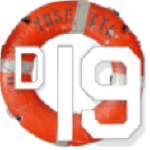
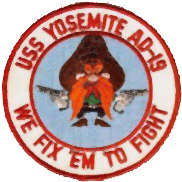 Yosemite Sam is the traditional mascot of the US Navy ship that bears his name. In 1979, Warner Brother Studios gave permission to reproduce Yosemite Sam's likeness for the USS Yosemite use.
Yosemite Sam is the traditional mascot of the US Navy ship that bears his name. In 1979, Warner Brother Studios gave permission to reproduce Yosemite Sam's likeness for the USS Yosemite use.

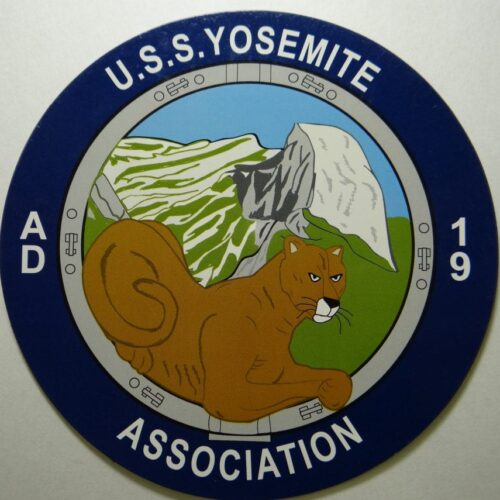
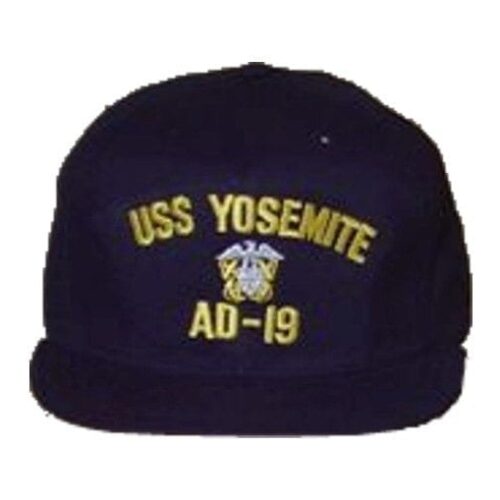
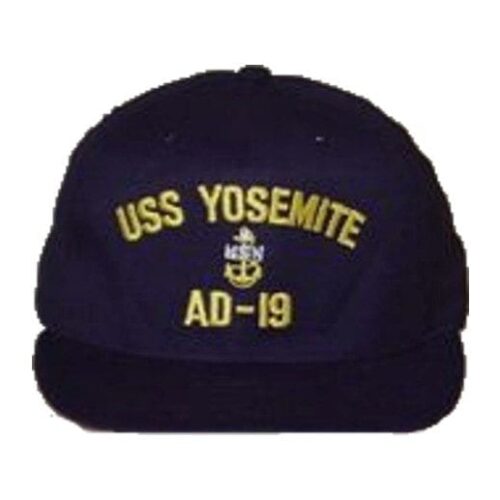
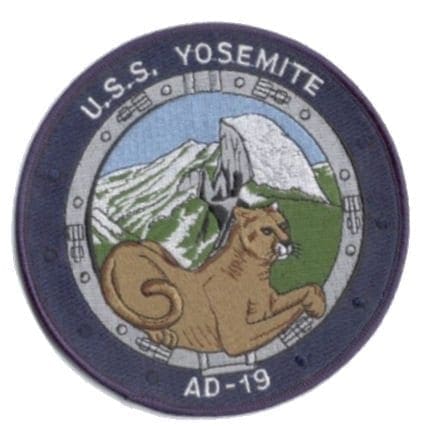
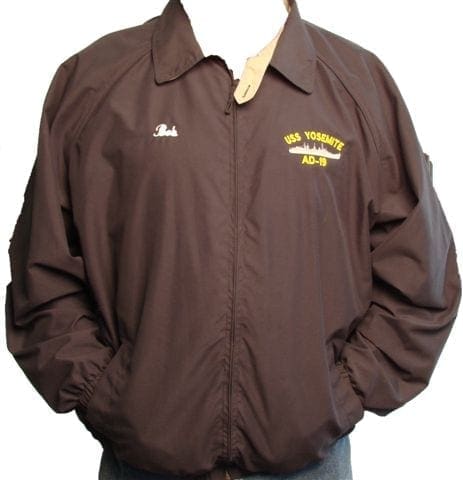
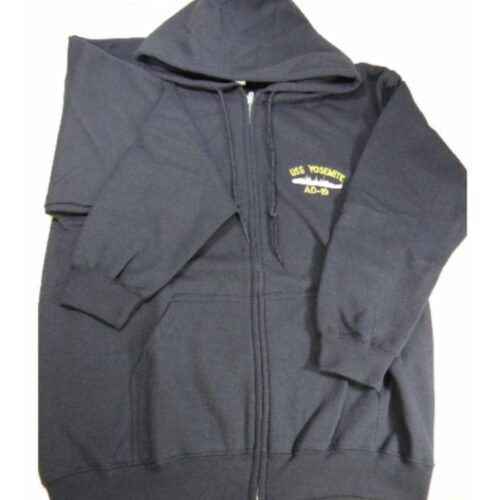
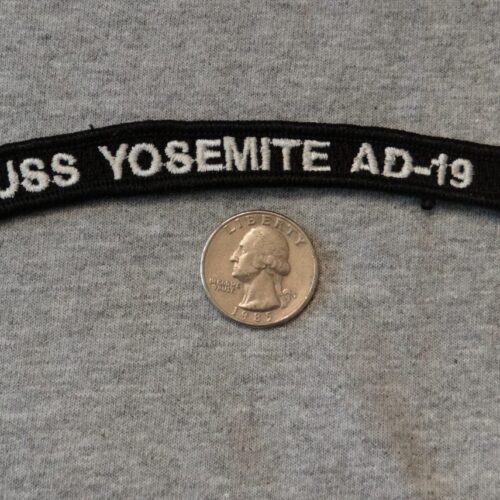
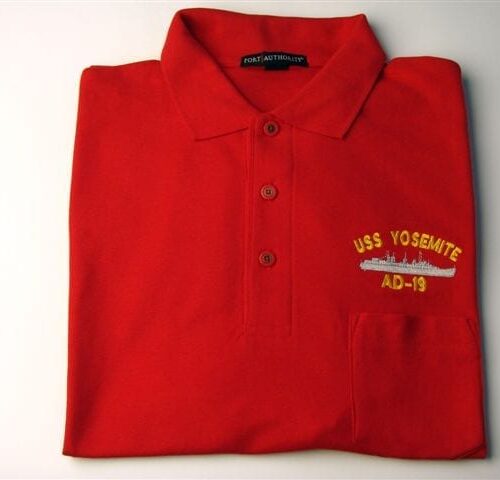
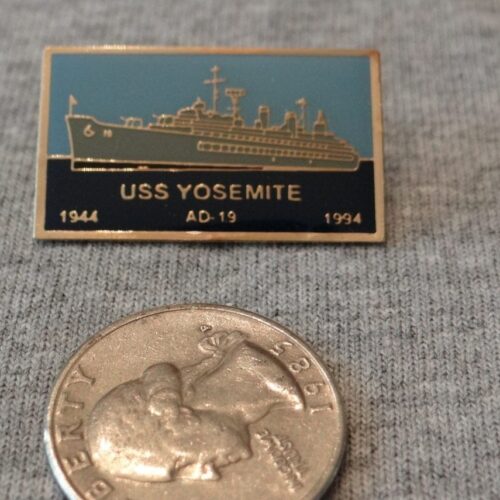
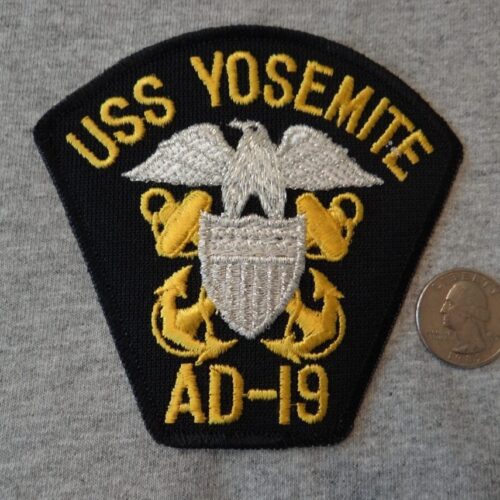
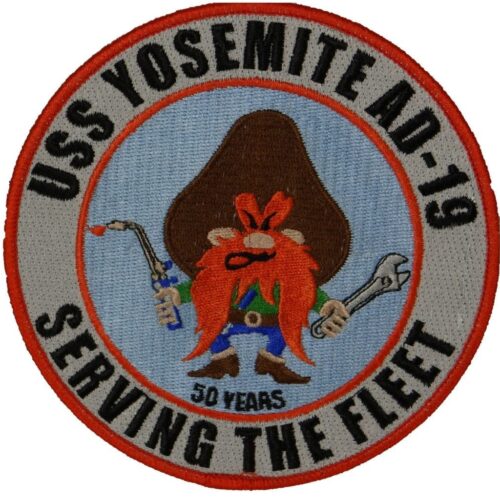
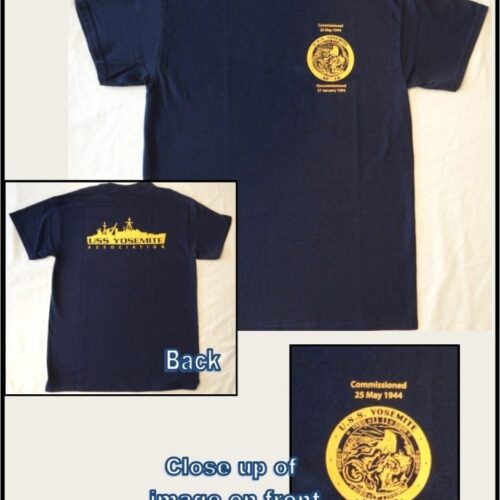
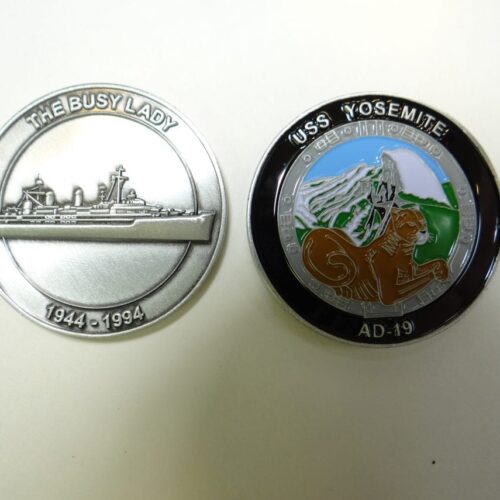
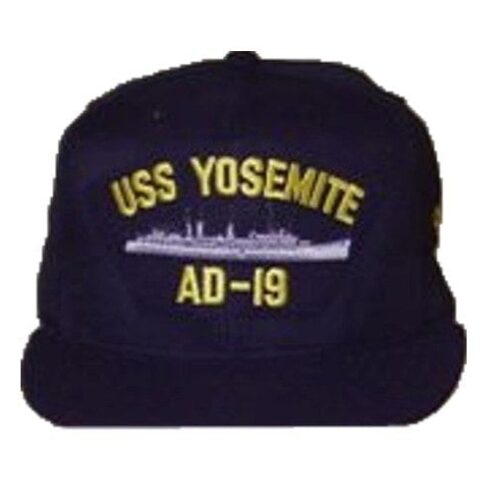
Great Read! Thank You! My husband was on the Yosemite the same time you were June 1991-Dec 1993! He was a DC3 Damage Controlman.